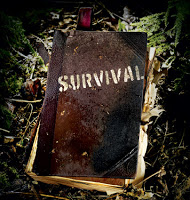Gaye Levy, Contributor
Activist Post
We have now passed the half-way point and are entering month seven of getting prepared one month at a time. By now you should be feeling secure in the knowledge that you are ready to beat the odds should a natural disaster or crisis appear in your area.
The gear and tools we are going to purchase this month are lifesaving and useful in many types of situations. Add to that an essential skill that everyone should learn and we have a two-punch whammy for seeing you through disasters, accidents, health care woes and more.
With that introduction, let’s get started.
- NOAA Alert Weather Radio
- ABC fire extinguisher
- 100 feet of rope or paracord
- Jug of juice – 1 per person
- Adult and children’s vitamins
- A pair of pliers and/or vise grip
Stay Informed No Matter What
I am always surprised at the number of people who do not know what the NOAA Weather Radio service is all about. And for some reason, be it ignorance, embarrassment, or simply ambivalence, they never ask. It is time to end that.
The NOAA Weather Radio All Hazards system is a nationwide network of radio stations broadcasting continuous weather information directly from the nearest National Weather Service office. This is important because NOAA Weather Radio broadcasts official Weather Service warnings, watches, forecasts and other hazard information 24 hours a day, 7 days a week. It can be your single source for comprehensive weather and emergency information.
Wouldn’t you like to be warned in advance and be informed post-event of critical information following a winter storm, earthquake, hurricane, avalanche, chemical spill, or power outage? You need a NOAA Alter Weather Radio for that and even more important, you need one that is battery, crank or solar operated.
My personal favorite is the Kaito Voyager but there are numerous others – some at lower prices and other more expensive with more features. Another option is the Etón American Red Cross Self-Powered Radio with Flashlight, Solar Power and Cell Phone Charger for about $34.
Don’t Let a Fire Harm You or Your Loved Ones
The next item of gear we are going to get, if you don’t already have one, is an ABC fire extinguisher. ABC what, you say? The ABC designation means that it is a multi-purpose dry chemical type extinguisher good for class A, B, and C type fires.
There is a very informative website, appropriately called Fire Extinguishers 101 that provides the following information:
- Class A extinguishers are for ordinary combustible materials such as paper, wood, cardboard, and most plastics. The numerical rating on these types of extinguishers indicates the amount of water it holds and the amount of fire it can extinguish. Geometric symbol (green triangle).
- Class B fires involve flammable or combustible liquids such as gasoline, kerosene, grease and oil. The numerical rating for class B extinguishers indicates the approximate number of square feet of fire it can extinguish. Geometric symbol (red square.
- Class C fires involve electrical equipment, such as appliances, wiring, circuit breakers and outlets. Never use water to extinguish class C fires – the risk of electrical shock is far too great! Class C extinguishers do not have a numerical rating. The C classification means the extinguishing agent is non-conductive. Geometric symbol (blue circle).
A Few More Items for Month 7
We are also going to add paracord to your emergency and disaster kit. Now let me tell you about paracord, since this is very useful stuff that is very inexpensive. Paracord is a lightweight nylon rope that was originally used in the suspension lines of US parachutes during World War II. Soldiers, however, found that this miracle rope was useful for far more than their paratrooper missions. In the ensuing years, both the military and civilians alike have found hundreds if not thousands of uses for paracord.
It is available by length, typically 50 to 100 feet or more and in a variety of colors. It is also available is large quantities by the spool. Many hikers and outdoor sports enthusiasts make or purchase “survival bracelets” made of several feet of paracord which is woven into a compact bracelets that can be unraveled in the field.
Paracord can be used for many purposes such as securing things, removing heavy debris and fixed objects, strapping things together, as a harness to escaping a burning building, controlling bleeding as a tourniquet, and the list goes on.
You can even unravel the cord and use the individual strands as a fishing line or as thread to sew on a button. Wonderful stuff.
By the way, you will often see paracord referred to as Paracord 550 means that it has a breaking strength of 550 pounds or more.
We are not going to leave nourishment off our list this month.
 Although fresh fruits and vegetables are always preferable to juices, they do not store well; and in an emergency, juices will not only provide vital nutrients, but also hydration. Choose from bottled or canned tomato, V8, apple, pineapple or other juices and plan on a minimum of 32 ounces for each person.
Although fresh fruits and vegetables are always preferable to juices, they do not store well; and in an emergency, juices will not only provide vital nutrients, but also hydration. Choose from bottled or canned tomato, V8, apple, pineapple or other juices and plan on a minimum of 32 ounces for each person.
Although the standard 46-ounce size juice bottle or can is more cost-effective, depending on your needs, you may find small, single-serving cans more convenient. Beware, however, of flavored juice-like products that are merely colored and flavored sugar water. We want some nutrition here!
Note: if you choose tomato juice and also store a pint or two of spirits, you will be able to make yourself a Bloody Mary – not such a bad idea as long as you remember that moderation is the rule.
One more thing: it goes without saying that your stored food supplies will provide you with calories and energy to get by. But will they have all of the necessary daily vitamins and minerals? Maybe. Maybe not. For this reason I recommend that you store away a supply of multi-purpose vitamins for a just-in-case scenario. Do this even though you ordinarily do not use supplements. Consider them as an extra layer of insurance.
The last two items before we move on to tasks are a set of pliers or a vise grip (locking pliers).
Chances are you have an extra set of one or the other, but if not, head on over the hardware store and pick up one of these useful tools. What are they used for? Among other things you can use them to tighten or loosen bolts, grab onto something where you need extra leverage and manipulate objects that are difficult to handle with the fingers alone. In a pinch you can use the pliers to crack edible nuts you find while foraging, or crack the shells of clams you find on the beach.
Month 7 Tasks:
- Take a first aid/CPR class
- Show family members where and how to shut off utilities
Remember when I said that this month you will learn skills that will save lives?
When disaster strikes, the probability of being injured escalates with the scope of the disaster. In addition, a serious injury causing loss of breathing increases dramatically. When this happens, knowing basic first aid and knowing how to deliver CPR can mean the difference between life and death.
Virtually every community offers courses in first aid and CPR. You can check with your local fire department, community college or Red Cross chapter for courses in your area.
Factoid: Less than 1/3 of those people who experience a cardiac arrest at home, work or in a public location have CPR performed on them. Most bystanders are worried that they might do something wrong. As a result, in 2009 the American Heart Association launched a Hands Only CPR public relations initiative and a website as a means to address this issue.
In addition the Red Cross has a free, downloadable flyer describing Hands on CPR that you can print out and store with your emergency kit for reference. In addition, the American Heart Association has produced this short video. You can also visit Hands on CPR for more information.
Don’t Forget the Utility Shut-Offs
Another thing that happens when disaster strikes is that the utilities go out. When that happens, it is important to know where the main controls are located, and when and how to turn them off. Here is a quick reference guide.
Electricity
- Locate your main electrical switch or fuse panel, and learn how to turn off the electrical power system.
- If a generator is used as a backup power supply, remember to follow the manufacturer’s instructions. Connect lights and appliances directly to the generator and not to the electrical system.
Water
- Turn off water at the main meter or at the water main leading into the house. This will prevent contaminated water from entering your water heater and plumbing.
- Turn off the valve — turn to the right. This will require a special valve wrench, available from a hardware store. Make sure you have the tool readily available.
Sewer system
- Make sure your sewer system is functioning properly before using it. This will prevent the contamination of your home, and possibly the drinking water supply.
Gas meter
- Locate your gas meter and valve.
- Have a wrench immediately available for turning off the gas supply.
- If you smell natural or propane gas, evacuate immediately and leave the area. Go to where you no longer smell gas. Do not use matches, lighters or open flame appliances. Do not operate electrical switches because sparks could ignite gas causing an explosion.
- Shut off gas only if you smell gas or hear a hissing noise. Contact the gas company to turn the gas back on.
The Final Word
With each month. the supplies, gear, tasks and skills you have acquired can be likened to a monthly deposit in to a savings account. And, as with any investment, the balance grows. In this case, the dividends are paid in the form of increased self reliance and self sufficiency.
There is a commonly used term: “When the stuff hits the fan” or SHTF. What makes up this “stuff” can be something as benign as a mild winter wind storm; or something as catastrophic as a massive earthquake and tsunami such as the one that occurred in Japan in March 2011.
In between, there are hundreds of other events that could require that you avail yourself of the preparedness projects you have completed so far.
We have three more months to go, and beyond that we will continue to review, refresh and enhance what we have done so far. Be proud that you have taken these steps and look forward to a safe – and self-reliant – future.
Previous articles in this series:
Month 1: Supplies, Gear and Tasks to Get You Started
Month 2: First Aid, Personal Hygiene and Home Safety
Month 3: Special Foods, Fire Drills and Home Safety
Month 4: Prescription Medicine, Cash, and Things to Keep Us Warm
Month 5: Sanitation Supplies and Establishing a Community of Like-Minded Folks
Month 6: Fitness, Energy Bars and Face Masks
Read other articles by Gaye Levy here.
Enjoy your next adventure through common sense and thoughtful preparation!
Gaye Levy, the SurvivalWoman, grew up and attended school in the Greater Seattle area. After spending many years as an executive in the software industry, she started a specialized accounting practice offering contract CFO work to emerging high tech and service industries. She has now abandoned city life and moved to a serenely beautiful rural area on an island in NW Washington State. She lives and teaches the principles of a sustainable, self-reliant and stylish lifestyle through emergency preparation and disaster planning through her website at BackdoorSurvival.com. SurvivalWoman speaks her mind and delivers her message with optimism and grace, regardless of mayhem swirling around us.
linkwithin_text=’Related Articles:’




Be the first to comment on "Getting Prepared Month 7: Gear, Tools and Skills to Save Lives"